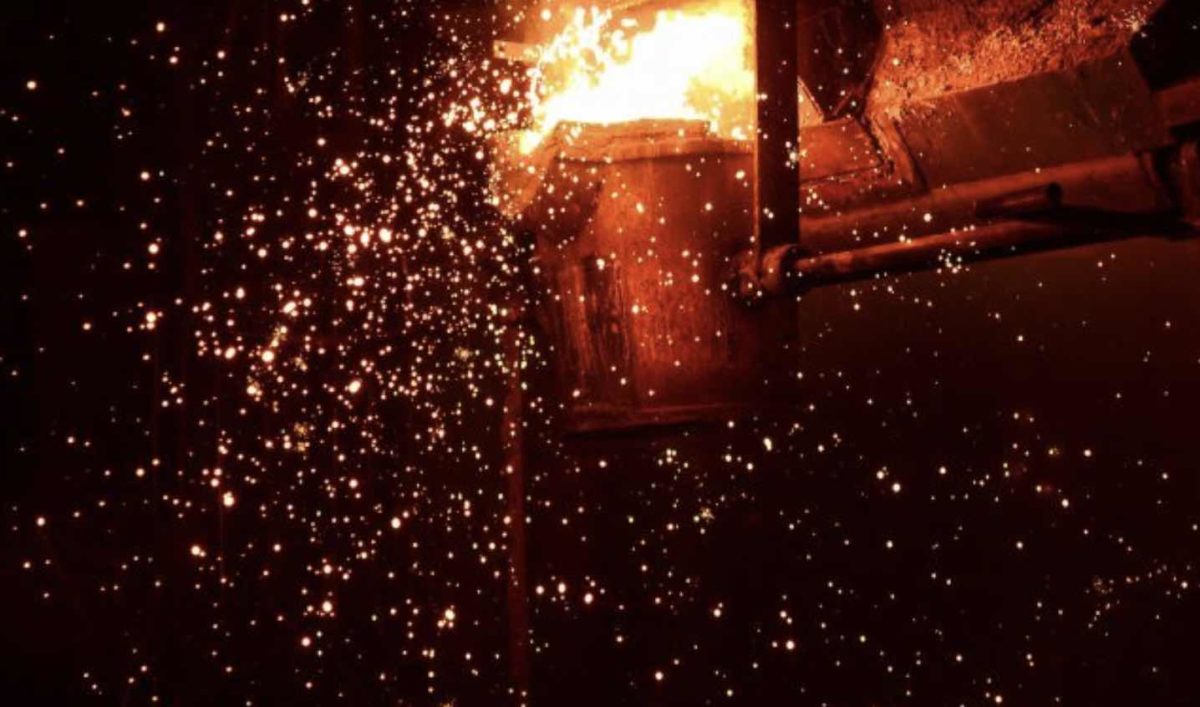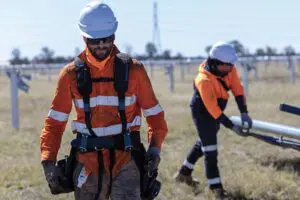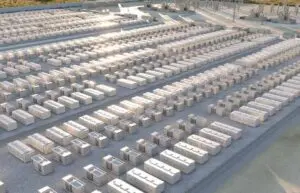The global steel industry could achieve net zero emissions by the early 2040s, according to a new German study, provided the sector invests in key technologies, phases out coal-based steel production rapidly, and establishes a global green iron trade.
“Our study shows that it is time to remove the ‘hard-to-abate’ label from the steel industry,” said Frank Peter, Director of German climate non-profit Agora Industry, which co-published the report with the Germany-based Wuppertal institute for Climate, Environment and Energy.
“The technologies and strategies required to reach net zero are already there – now governments and companies need to combine their efforts to deploy them fast.”
Steelmaking is a major source of global pollution, so the quest to make it greener has absorbed industry.
“If the steel sector was a country, it would be the third largest CO2 emitter and the second largest coal consumer,” says Peter. “This is why the accelerated decarbonisation of the sector is so important, and can be a key element in raising global climate ambition.”
The study provides two scenarios for 1.5C° compatible steelmaking which each focus on different technologies. The first scenario applies a whole range of different clean steelmaking technologies, the other focuses particularly on an accelerated roll-out of DRI post-2030.
DRI, also called sponge iron, is produced from the direct reduction of iron ore into iron by reducing gases, including hydrogen.
DRI is far less energy intensive than a typical blast-furnace, the traditional method for reducing iron. DRI using hydrogen can in theory produce near-zero emissions steel. The DRI produced can then be used to make steel in Electric Arc Furnaces (EAFs), a cleaner, greener steelmaking method.
“In our scenarios we have different feedstocks for DRI, the biggest share by far is hydrogen,” explains Wido Witecka, a project manager at Agora Industry and co-author on the study.
“We also have a role for bioenergy and carbon capture and storage (BECCS), and there’s also some natural gas-based DRI in combination with CCS.”
Other technologies considered in the first scenario include molten oxide electrolysis and secondary steelmaking, according to Witecka.
Under the two study scenarios, the report finds that the phase-out of coal in steelmaking is technically feasible by 2043 if the industry applies the broad spectrum of technologies, or 2045 if it focuses on DRI.
The study finds that for existing coal-based blast furnaces, a coal phase-out by 2043 would not lead to any premature shutdowns. But, because there’s a large pipeline of new coal-based steel plants in emerging economies, the report says it’s crucial to address potential carbon lock-ins and stranded assets.
That will require international cooperation, including climate finance for emerging economies, de-risking policies to lower the costs of capital, non-distortive trade agreements and joint technology development.
The report finds carbon capture and storage (CCS) has an uncertain future in coal-based steel production. Currently, coal-based steelmaking that incorporates CCS has been a core part of virtually all major steel decarbonisation scenarios.
But Agora estimates that CCS in tandem with coal-based steelmaking is unlikely to reduce direct CO2 emissions beyond 73%, and cannot address upstream emissions like coal mine methane leakage.
Compared to other technologies, efforts to commercialise the coal plus CCS route are low, the report says. While the 2030 pipeline for commercial-scale coal and CCS steelmaking amounts to just 1 Mt, the project pipeline of H2-ready DRI plants has grown to 84 Mt over the last three years.
“So you see that for steel companies that are faced with the option of which technology to choose, they almost exclusively opt for direct reduced iron plants,” says Witecka.
But the report estimates that with current engineering and construction capacities, around 70 Mt of additional H2-ready DRI capacity could be built by 2030, amounting to roughly half of the 120 to 150 Mt of additional DRI capacity required by 2030 for a 1.5C compatible pathway.
Addressing this shortfall would require retraining engineers and construction workers, or facilitating the entry of new players in the H2-based DRI market.
The report also finds that energy and conversion losses in the transport of hydrogen mean that importing liquid hydrogen or ammonia by ship will be unlikely to support green steelmaking in most countries.
One solution, according to Witecka, would be to import embodied hydrogen in the form of green iron. Developing a robust global green iron economy could remove a step for many steelmakers around the world.
That green iron could be sourced from the world’s major iron-ore exporters like Australia, Brazil, South Africa, and Canada, all of which are projected to have relatively low production costs for renewable hydrogen.
“The international green iron trade can make the global steel transformation cheaper,” Witecka says.
All of this hinges on good policy, according Peter.
“The 2020s are a major crossroads for the global steel sector,” he says. “The right policy and investment decisions today will avoid high carbon lock-in and stranded assets and put us on the path of net-zero compatible investments that can future-proof the industry and its jobs.”
Those policies would include proper financing of clean energy and raw materials, renewables, hydrogen technologies, and CCS infrastructure.
“International cooperation is key,” says Witecka.










